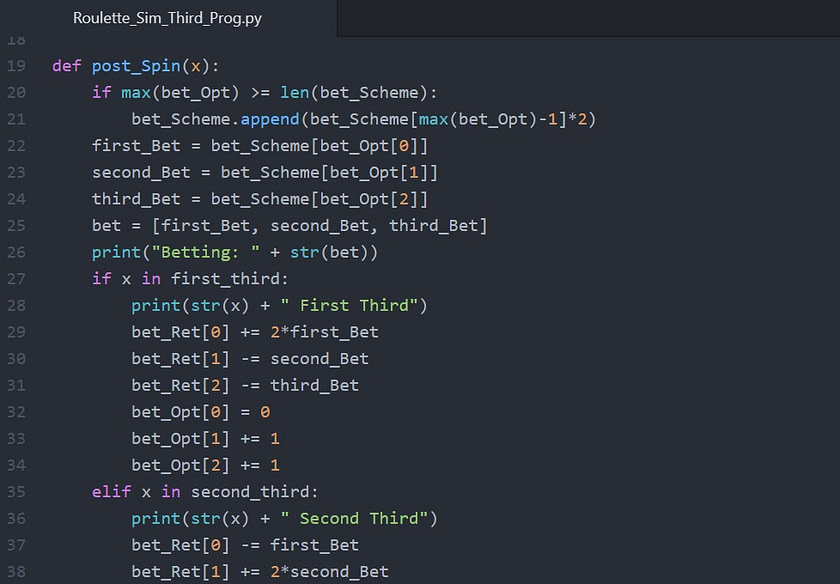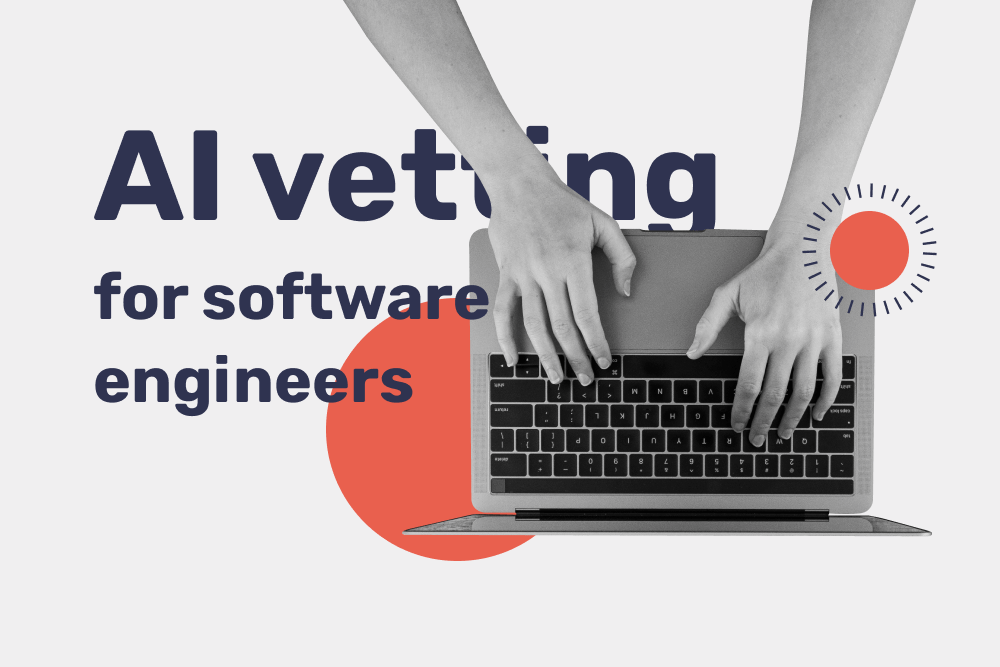Python is one of the fastest-growing programming languages at the moment. In the recent TIOBE index, it is placed first, leaving C and Java behind. The language is a go-to-pick for data science and machine learning projects and has a wide range of enterprise applications. That’s why, if you are wondering which language is the best one for your tech project, Python seems a powerful contender as a primary back-end technology.
Once you are set on including Python in the tech stack, it’s time to look for an experienced developer. To get started, you have two ways ‒ partner with a recruitment company like Bridge or find the right candidate independently. Handling the hiring process on your own is lengthier and sometimes more challenging, but it still brings significant benefits, like full control over the hiring process, direct communication with potential hires, and more.
If you believe that independent hiring is for you, we’d like to help you make the interviewing process easier and smoother. As a global recruitment company with years of experience, we prepared a list of basic Python programming interview questions that you can ask Junior, Middle, and Senior developers.
10 Junior Python Developer Interview Questions
A programmer who applies for Junior Python developer jobs should have a solid understanding of Python’s syntax structures and the differences between them. Other than that, a coder should know how to handle algorithms and data structures. Finally, it would be helpful to find someone with a basic knowledge of Django – a Python-based web development framework.
To test how well the candidate knows the basics of Python, assess a programmer’s skills using these Python software engineer interview questions.
#1. Name the differences between a list and a tuple in Python
Although both lists and tuples are data collections, there are fundamental differences between the two. Knowing them helps developers choose which collection type they want to use.
| Lists | Tuples |
| Mutability: items on the list can be changed | Immutability: there’s no way to edit a tuple |
| Lower speed than that of tuples | Higher speed than that of lists |
| Uses square brackets: mylist=[1, “Python”, 1.5] | Uses round brackets: mytuple=(1, “Python”, 1.5) |
#2. What is a namespace?
Namespace is a naming system adopted in Python that helps developers avoid name duplicates. You can think of it like a Python dictionary where object names are the keys and the contents of an object are values.
#3. Name the fundamental Python features
- Interpreted language. Unlike C, there’s no need to compile Python code before running it.
- Object-oriented language. Like Java and other OOP technologies, Python supports inheritance and class definition. On the other hand, there’s no support for access specifiers (e.g., public, private in C++).
- Code execution is slower than that of compiled languages. To find their way around the issue, developers use packages like NumPy.
#4. What are Python modules? What are they used for?
Python modules are files that contain executable code. They help break large chunks of code into smaller parts, increasing readability and working efficiency. Here is the list of widely used Python modules:
- sys
- math
- random
- JSON
- data time
#5. Specify the difference between local and global variables
A global variable is the one declared outside of a function, in a so-called global space. All functions within the code can access such a variable.
Local variables, on the other hand, are those you create within a function. Trying to access them outside the function will return a system failure.
Other than common Python interview questions and answers, take a look at these behavioral and cultural software developer interview questions to ask at a job interview.
#6. Is Python case-sensitive?
Yes, Python is a case-sensitive language.
#7. Does Python require indentation?
Indentation helps separate blocks of code by putting four spaces “ “ between them. While other languages mainly use it to improve code readability, in Python, indentation is a key concept.
Indentation helps developers specify a block of code within a loop, a class, or a function. If a programmer tries to run a module without respecting indentation rules, the system will return a failure statement.
#8. What are Python functions?
A Python function is a set of commands and instructions that is active after a developer calls it. To define a function, Python programmers use the def keyword. To call the function, type functioname(). If a function features arguments, you have to specify them inside the parentheses.
#9. Why do Python developers use continue, break, and pass?
Here are the descriptions of how Python developers use these statements:
| Statement | Application |
| Break | Used to terminate a loop and move on to the next statement. |
| Continue | Continue rejects all the latter statements of the loop and moves the control back to the top. |
| Pass | Helps bypass a piece of code that’s needed only for syntax purposes. At its, pass executes a null operation. |
#10. What are ways to generate a random number in Python?
Developers use the ‘random’ module to generate a series of numbers. There are several statements a programmer can use to create different random number generators:
- random.random – returns a floating value in the range from 1 to 10.
- randrange(a,b) returns a random integer number within a given range. Note that the method doesn’t create a range object.
- uniform(a,b) returns a random float value located within a given range.
These Python junior interview questions and answers make it easier to hire a Python programmer for your project.
10 Middle Python Developer Interview Questions
A middle developer should use modules freely, have hands-on experience using Django and other web frameworks, as well as a solid grasp of basic data science concepts (packages: NumPy, MatPlotlib, tools: SQL, understanding of probability and statistics) – it’s a good idea to add a few Python data science interview questions to test a candidate’s skills. Or you can leave this job to us.
Here at Bridge, we constantly help our clients find experienced developers, Python included. For example, recently we helped Obvious.ly, a leading influencer marketing company, find data analysts and data scientists with proficiency in SQL and knowledge of Python. Within our sourcing as a service offering, we provided 5 to 10 technically qualified candidates per week using our one-of-a-kind sourcing engine, and our tech-savvy human sourcers vetting each candidate.
Still, if you want to evaluate the skills of a middle developer without extra help, use the following Python middle interview questions.
#1. What are Python iterators?
Iterators are objects that contain some countable values. As the name suggests, a developer can iterate on each value. Python data collections: lists, tuples, sets, and dictionaries are examples of iterate objects.
#2. What are Python documentation strings?
By function, documentation strings are similar to comments. The only difference is that you use triple quotes “””, not a hash-tag, to create a documentation string.
A candidate should also specify that documentation strings are not executed because they are not assigned to a variable.
#3. Explain the use of subn(), sub(), and split() in the “re” module
Re is a Python module developers use to execute operations that involve expression matching. In particular, it contains three modules to allow editing strings – subn(), sub(), and split().
Here are the differences between these methods:
| Method name | Application |
| subn() | Defines all strings with a matching regex pattern, replaces them with a new one, and returns the number of replacements. |
| sub() | Defines all strings with a matching regex pattern and replaces them with a new one. |
| split() | Splits strings into lists using regex patterns. |
#4. Why do developers prefer NumPy arrays over Python lists?
Python lists have undeniable benefits when it comes to operations like concatenation, appending, item deletion, or insertion.
However, their functionality is limited – there’s no support for the multiplication or addition of vector values. Also, since lists support different data types, Python has to store type information for each object on the list. Thus, the execution of the code is slower.
NumPy arrays are more convenient since they support both matrix and vector operations. Other operations include convolution, quick search, linear algebra, histograms, and more. Last but not least, a NumPy array is much faster than a Python list.
#5. How does Python approach multithreading?
The Python language has the following multi-threading tools:
- A designated multi-threading package. It’s not widely used as it slows code execution down.
- GIL (Global Interpreter Lock) constructor. It helps ensure that only one string is executed at a time. After GIL executes a string, it’ll get passed over to the next one.
Thus, while there’s an illusion of parallelism (multiple strings running synchronously), the truth is, threads take turns during execution. However, the process is so fast that it’s barely distinguishable to the human eye.
#6. What is inheritance? Name the main types of Python inheritance.
Inheritance is a way for a class to pass its members (e.g. methods or attributes) to a new class. In this case, a class that contains the original data is called a super-class. The inheriting class is called a child or derived class.
There are four inheritance types in Python:
- Single inheritance – a child class inherits the data passed down by one super-class.
- Multiple inheritance – a child class inherits the members of several super-classes.
- Multi-level inheritance – a derived class d1 inherits the members of a super-class b1; a child class d2 inherits the data from a base class b2.
- Hierarchical inheritance – a high number of child classes can inherit the members of one superclass.
#7. Define monkey-patching
Python allows software developers to change the behavior of a module at runtime. To make these dynamic edits, programmers use monkey-patching.
#8. Define polymorphism in Python
As the name suggests, polymorphism is the ability of a thing to assume many forms. In Python, it refers to using a function for different data types (strings, integers, booleans, or floats).
While two functions will have identical names, they will differ by signatures.
#9. What are the differences between the three popular libraries: Django, Flask, and Pyramid?
- Flask is a relatively straightforward, ready-to-use framework used for building smaller applications.
- Pyramid is a larger-scale framework with tools for database management, templating, and many others. Pyramid is configurable.
- Django can also be used to develop large applications. It relies on the model-view-template architecture.
#10. What is the use of the map function in Python?
The map() function helps execute a function for all items in the iterated object (list, dictionary, set, or tuple). It has two arguments:
- Function specifies a function that will be executed on each object.
- Iterable specifies a data collection or a sequence to which a function will be applied.
5 Senior Python Developer Interview Questions
A senior Python developer should be skilled enough to see the code they write as a part of the bigger picture.
Other than being a confident Python user, such a coder needs to use front-end development technologies (HTML, CSS, JavaScript), use big data tools (Hadoop, Spark, and others), and be a strong debugger.
Here are a few Python interview questions for experienced developers that help test whether a programmer is a good fit for a senior position:
#1. What are the differences between Wheels and Eggs?
Both Wheel and Egg are packaging formats that don’t require the compilation of install artifacts. Out of the two, Wheel is the newer one and is considered a standard recommendation for Python developers.
Here’s the breakdown of the differences between Wheels and Eggs:
| Wheel | Egg |
| Has an official PEP | Does not have an official PEP |
| Packaging (distribution) format only | Distribution and installation format |
| Wheel specifications are versioned | Egg is not versioned |
| PEP-376 compliance | Uses egg.info |
| Robust naming conventions | Limited naming convention |
#2. What is the purpose of Python non-local statements?
Non-local statements allow assigning variables to outer-scope statements that are not global. The most common application of the keyword is in nested functions, where there’s a need to make sure a variable isn’t accessible by the inner function.
#3. How do developers use “with” in Python?
With is a statement used to simplify exception handling. It encapsulates cleanup and preparation in a context manager. It facilitates managing a file stream and improves code readability – for example, there’s no need to call file.close() when using with.
#4. How is Python exception handling different from that in Java?
Unlike Java, Python allows developers to see an error in the code without terminating the execution of the program. This mechanism is called try-except. Sometimes, the system suggests a way to solve the problem along with the error description.
There are two types of try-except clauses in Python:
- Try-except-finally.
- Try-except-else.
#5. Name the differences between functional and object-oriented programming.
Functional programming languages rely on immutable objects. On the contrary, object-oriented programming supports mutable states and allows object modifications.
Functional programming relies on the concept of function, using inputs in computations to return the desired output.
On the other hand, OOP is class-focused, allowing developers to create variables that can be manipulated using methods or functions, inherited, or extended.
Obstacles you might encounter conducting interviews on your own
Companies face significant challenges when hiring tech talent, and most of them are one way or another related to interviewing applicants. To get prepared, let’s look at potential hurdles you might come across when hiring Python engineers.
Limited access to the talent pool
When sourcing for Python developers on your own, you can turn to online job platforms like Upwork, LinkedIn, and more. Yet, without automated tools or dedicated software in place, the talent pool you can reach is quite limited. To expand the outreach, you can partner with technical recruiters like Bridge. Our sourcing team uses a proprietary sourcing engine that helps identify and hire experts across three continents, namely in Latin America, Europe, and North America.
Lack of Python expertise
It might be difficult to evaluate the candidate’s hard skills without Python expertise and knowledge of its ecosystem. For instance, you can’t simply ask relevant questions or accurately assess the responses when talking about hands-on expertise. That’s why it’s better to invite a Python expert to the interview or team up with an agency that will do the job for you.
At Bridge, we work with local recruiters who understand technology and software development processes and speak with candidates in their native tongue. Having assessed developers’ skills, recruiters provide you with a list of viable candidates to interview and hire the most suitable one.
Time-consuming interviewing process
Once you decide to interview Python developers without extra help, you should get ready for the long and tiring procedure with many stages involved, like screening, technical and behavioral assessment, not to mention other hiring stages like candidate sourcing, resume screening, and so forth. Fortunately, you can streamline the hiring process and save a great deal of time by partnering with Bridge. Our sourcing engine helps identify the exact talent pool based on your requirements, making the outreach five times faster.
Conclusion
Hiring a Python engineer is not easy since the demand for skilled talent is high. However, the candidate screening process is not as intimidating when you have a list of Python job interview questions to ask candidates. Using the list above as a reference is extremely handy when interviewing juniors, middle, or senior developers.
To hire skilled and affordable talent, consider expanding the search abroad. Looking for Python developers in Ukraine, Argentina, or Mexico is much cheaper than sourcing talent from the US.
When hiring a tech team abroad, business owners would benefit from legal and operational assistance. To start a global office, reach out to Bridge Teams. Our talent managers and legal professionals will guide you each step along the hiring process. Other than that, we offer business owners a customizable platform for managing tech teams remotely.
Bring your project to life with an efficient global office – write us a message!




